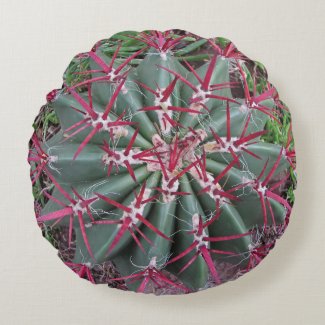When most people think of Arizona they tend to think of desert and cactus. Southwestern cactus bring to mind long needles and plants that can be admired but steered clear of. While we do have a huge variety of cacti in our state, cacti are not the only plants to use needles, thorns, or spikes to protect themselves.
So why does a cactus plant have needles? The obvious answer is to protect themselves but why do they need so much protection. Cacti are made up of a huge amount of water. The mighty saguaro for example can be caused to topple from too much water. A cactus will soak up water and store it allowing it to get through our long periods of drought. Animals seek out water and so a quick meal on a cactus pad can provide needed water for animals. While the needles keep away some animals, there are others that are very adapted to life in the desert. Javelina for example will munch on a cactus plant without care to the needles. So the needles are a level of protection.
Many plants that thrive in the desert sport thorns besides cacti, however. My lemon, lime, and jujube trees all have thorns of various lengths. These trees do very well in my backyard though I am not clear exactly how protective these thorns are as plenty of birds eat my jujubes and the citrus has been nibbled at by a variety of animals.
Flowering bushes of all sizes also have thorns making them difficult to trim and not favorites of nesting birds. As with the citrus, I am not sure what the function of the many spikes on flowering bushes might be since there is nothing edible to my knowledge.
You might be surprised to learn that the beautiful palm trees that tend to do well in Arizona also come with protection. Most are planted for landscaping in neighborhoods and city parks. With water, they tend to grow and survive our harsh summers. Palm trees both tall and short display a huge number of spikes just behind the palm leaves. These spikes almost form a toothed appearance on some palms and making trimming them a tricky adventure.
Lastly, there are the plants that are so obviously protected that I will rarely see animals sitting close to them. These succulents typically feature serrated leaves that almost scream don't come close. Cacti are succulents but not all succulents are cacti. These plants do store water however and like a cactus plant wish to protect themselves. These spikes are typically not very long but they are sharp and plentiful which helps the plants survive.
When I first moved to Arizona I quickly learned two lessons about gardening and landscaping in the desert. The first came from a nursery when I was purchasing plants. They told me to always check around plants for curled up rattlesnakes before beginning to work. The second lesson I learned on my own very quickly. Wear nice thick work gloves when trimming landscaping because chances are there will be needles, spikes, or thorns hiding among the leaves.





Comments